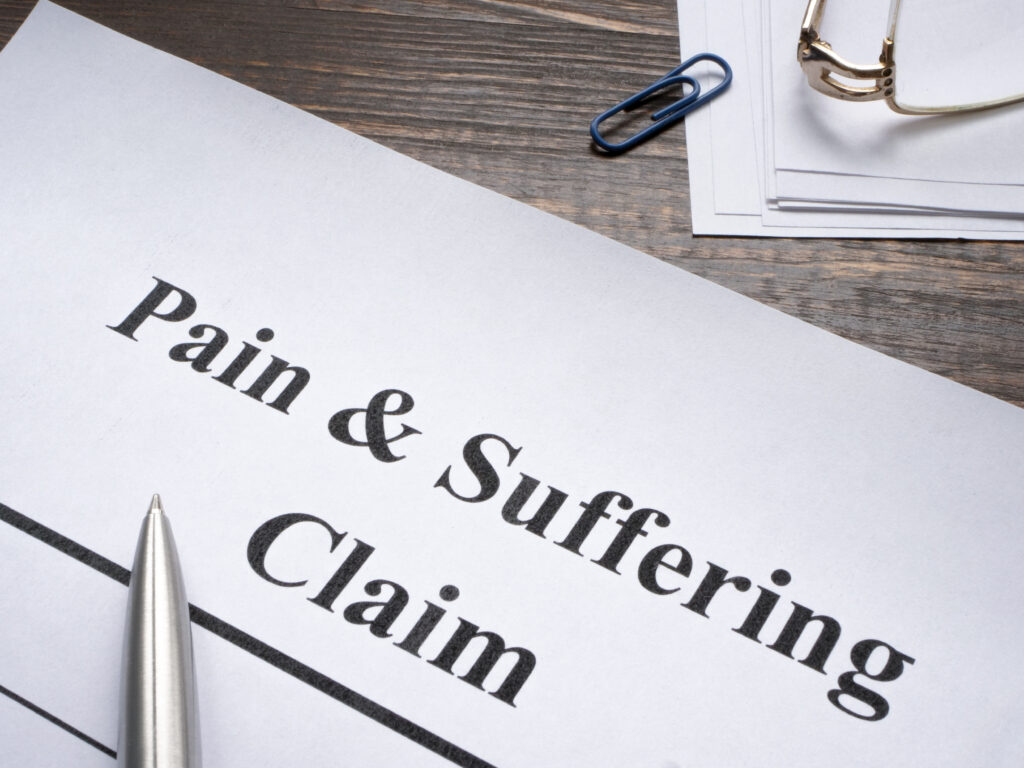Pain and suffering play a significant role in a personal injury claim, but demonstrating their impact requires more than just stating your experience. Without clear proof, insurers and courts may undervalue your claim, making it harder to receive the compensation you deserve.
The effects of an injury go beyond financial losses, often disrupting daily life, relationships, and overall well-being. Strong evidence can help establish the severity of your suffering, showing how it has affected your ability to work, engage in activities, and maintain emotional stability.
Read on to learn the essential steps for proving pain and suffering and strengthening your claim.

Collect Strong Medical Evidence
Medical records are critical when proving pain and suffering in a personal injury case. They provide clear, objective proof of your injuries, the treatment you’ve received, and the long-term impact on your health. Without proper documentation, it can be challenging to demonstrate the severity of your condition.
To support your claim, the following medical evidence can be essential:
- Doctor’s reports: A detailed account from your physician can document your symptoms, prescribed treatments, and projected recovery time. These reports serve as official confirmation of the extent of your injuries and the care required.
- Diagnostic tests: X-rays, MRIs, and CT scans provide clear, visual evidence of injuries such as fractures, spinal cord damage, or internal trauma. These objective test results strengthen your case by showing the physical impact of the accident.
- Treatment plans: A structured treatment plan from your healthcare providers outlines ongoing care, rehabilitation, and potential future medical needs. This helps establish the prolonged effects of your injuries.
- Medication records: Prescription history reflects the severity of pain and suffering by showing the types and dosages of medications required for pain management and recovery.
Thorough medical documentation helps demonstrate the seriousness of your injuries and their impact on your daily life. Working with Daly and Black or another trusted law firm can ensure that all relevant records are properly collected, organized, and presented in your case. Their experience in handling personal injury claims can help you build a compelling case and maximize your compensation.
Use Personal Documentation
Medical records are important, but personal records can also strengthen your claim by showing how your injuries affect your daily life. Keeping track of your pain, limitations, and struggles provides a clearer picture of your suffering.
To support your case, the following types of personal documentation can be helpful:
- Personal journals: Writing daily entries about your pain levels, mobility issues, and emotional challenges can help illustrate the impact of your injuries. Consistent records of your struggles make it easier to demonstrate how your condition has changed over time.
- Photographic evidence: Taking pictures of visible injuries, such as bruises, swelling, or scars, provides clear proof of your physical condition. Progression photos over time can highlight prolonged suffering and the healing process.
- Activity logs: Keeping a record of activities you can no longer participate in due to pain or limited mobility helps show how your injuries have affected your lifestyle. This can include missed family events, hobbies, or social gatherings.
Personal documentation adds another layer of evidence to your case. Combining it with medical records can provide a stronger claim for pain and suffering.
Obtain Witness Statements
Statements from people who know you can help show the full extent of your pain and suffering. Friends, family, coworkers, and medical experts can provide valuable insight into how your injuries have affected your daily life and future.
To strengthen your case, the following types of witness statements can be useful:
- Employer statements: If your injuries have made it difficult to perform your job, your employer can confirm any work-related struggles. This may include reduced productivity, missed shifts, or the need for job modifications.
- Family testimonies: Loved ones can describe changes in your mood, behavior, and daily activities. They can explain how your pain has affected your relationships and ability to participate in family life.
- Medical witnesses: A medical expert can provide an opinion on the long-term impact of your injuries. They can also discuss potential future complications and any ongoing medical treatments you may require.
Selecting a lawyer with experience in personal injury cases can help ensure these witness statements are properly gathered and presented. A skilled attorney can identify the most compelling testimony, strengthening your claim for pain and suffering.
Show the Emotional and Psychological Impact
Pain and suffering go beyond physical injuries. Many personal injury victims experience emotional distress that affects their mental well-being and daily life. Anxiety, depression, and post-traumatic stress can develop after a serious accident, making recovery even more difficult.
To support your claim, the following types of evidence can help demonstrate the emotional and psychological toll:
- Therapy records: Sessions with mental health professionals can document symptoms of anxiety, depression, or post-traumatic stress disorder. These records show the impact of emotional distress and any ongoing treatment needed.
- Expert testimony: A psychologist or psychiatrist can provide professional insight into how your accident has affected your mental health. They can explain how trauma can lead to long-term emotional struggles, affecting relationships, work, and daily activities.
- Behavioral changes: Evidence of changes in behavior, such as increased isolation, mood swings, difficulty sleeping, or avoiding certain situations, can support your claim. For example, someone injured in a car accident may develop a fear of driving, which significantly disrupts their daily life.
Emotional and psychological suffering can be just as damaging as physical injuries. Providing clear evidence of these struggles can strengthen your case and help ensure fair compensation.
Final Thoughts
Pain and suffering can take a serious toll, affecting every aspect of your life long after an accident. While these damages don’t come with a price tag, the right evidence can help convey their true impact. A well-supported claim strengthens your case and ensures that your hardships are properly recognized. Seeking legal guidance can make the process smoother, helping you present the strongest case possible.
